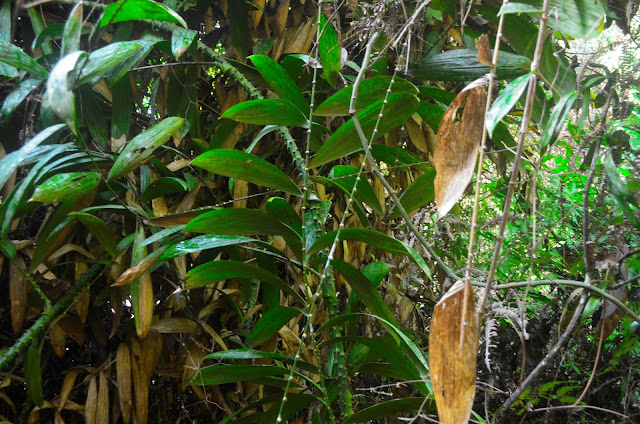 |
The climbing palms of the tropics - rattan or "Rotan" in Malay
Location : Provinsi Rattan, Zone I |
 |
Note the moisty thick organic floor
and the exposed smooth and shiny cane. |
Adventuring into the Provinsi Rattan this morning, I noticed the half dozen species that grow in the area are doing well. Rattans are the climbing palms of the lowland tropical rainforests. They come in many sizes and quality and therefore offer varying commercial value. The many uses of rattan is well covered in a blog post I made a few years ago as in
here. In the Provinsi Rattan there is ample canopy cover that create the most ideal climate and habitat for the survival of rattans. They find their way up the forest canopy by means of special whiplike organs (flagellum) armed with hundreds reflexed or recurved thorns which grows on the ends of the leaf sheaths or on the leaf sheaths, depending on the species. What is important here is to preserve the green canopy above and at the same time the thick layer of dead organic matter on the ground floor. On the ground is where the seeds will germinate provided that the precise soil conditions are met and the moisture content correct and consistent over long periods because the seeds may take between one to six months to germinate. This implies that once humans destroy the forest and expose it to direct sunlight the rattans seeds will not be able to germinate for posterity. You can harvest the rattans but in doing so you must keep the green canopy and forest floor unaltered.
 |
| Flagellum- the whiplike climbing organ derived from the inflorescence bearing reflexed spines. |
